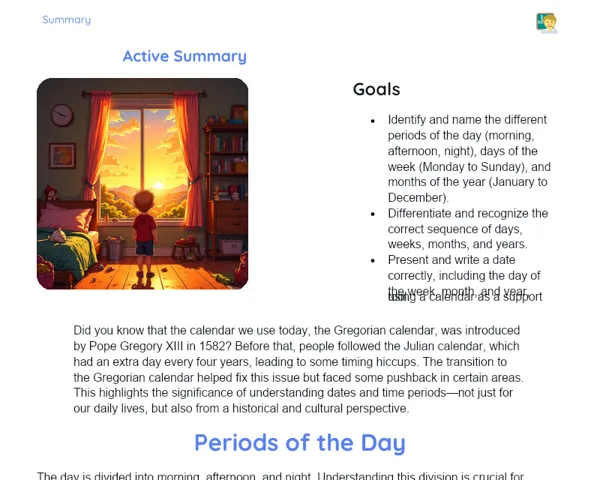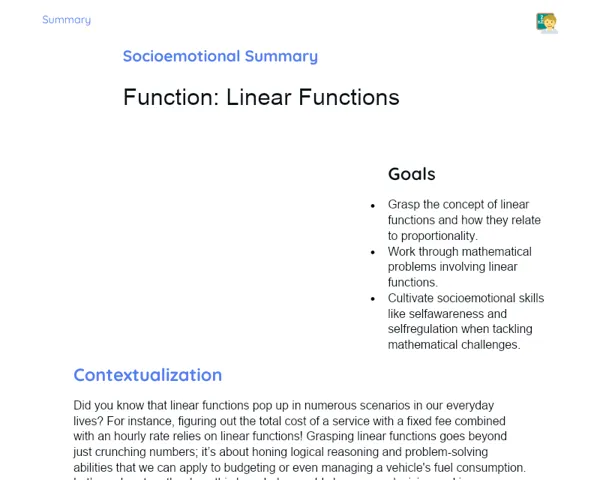Goals
1. Read and write rational numbers in decimal form.
2. Identify the key characteristics of decimal numbers.
3. Comprehend the significance of digit placement in decimal values.
Contextualization
Decimal numbers play a vital role in our everyday lives, appearing in things like product prices, measuring ingredients in cooking, and timing in sports events. Grasping how to read and write these numbers is crucial for accurately interpreting information and making sound choices. For instance, in the kitchen, we often measure ingredients in decimal units, like 0.5 kg of flour or 1.25 litres of milk. At the shops, prices frequently read as R3.99 or R1.49, which we need to accurately understand and calculate.
Subject Relevance
To Remember!
Concept of Decimal Numbers
Decimal numbers are a way of expressing numbers that employs a decimal point to differentiate the whole number part from the fractional part. They help us represent non-whole quantities, granting us increased accuracy in measurements and calculations.
-
Decimal numbers include both a whole number part and a fractional part.
-
The decimal point serves as the separator between the whole and fractional parts.
-
Each position after the decimal has specific values (tenths, hundredths, thousandths, etc.).
Reading and Writing Decimal Numbers
Reading and writing decimal numbers involves recognising the whole number part, the decimal point, and the fractional part. It's important to focus on the positional values of each digit after the decimal point when reading.
-
When reading, the decimal point is pronounced as 'point'.
-
The digits following the decimal are read individually, with their positional values specified (tenths, hundredths, thousandths).
-
Example: 3.45 would be read as 'three and forty-five hundredths'.
Importance of Digit Position
The placement of digits in a decimal number impacts its value. Each digit to the right of the decimal denotes a smaller fraction (tenths, hundredths, thousandths). Understanding this is essential for conducting accurate calculations.
-
The first position to the right of the decimal denotes tenths.
-
The second position indicates hundredths.
-
Each subsequent position divides the previous value by 10.
Practical Applications
-
Product prices: in shops, prices are often displayed in decimal values, like R1.99 or R2.50.
-
Cooking recipes: precise measurements, such as 1.5 kg of flour or 0.75 litres of milk, are important.
-
Sports: event timings are recorded in decimals, for instance, 9.58 seconds for the 100 meters.
Key Terms
-
Decimal Number: A number encompassing a whole part and a fractional part, divided by a decimal point.
-
Tenths: The first digit immediately to the right of the decimal point.
-
Hundredths: The second digit immediately to the right of the decimal point.
-
Thousandths: The third digit immediately to the right of the decimal point.
Questions for Reflections
-
How can the precision of decimal numbers influence everyday financial decisions?
-
What would be the implications of neglecting decimal numbers in scientific measurements?
-
How does a solid grasp of decimal numbers enhance performance in fields like engineering and accounting?
Decimal Challenge: Crafting an Accurate Recipe
Let’s solidify our grasp of decimal numbers through a hands-on cooking activity.
Instructions
-
Select a simple recipe you enjoy (like cake, pancakes, or juice).
-
Compile a list of necessary ingredients, specifying the amounts using decimals (e.g., 1.5 kg of flour, 0.75 litres of milk).
-
If you were to double the recipe for a larger group, calculate the revised quantities for each ingredient.
-
Now, halve the recipe and reassess the quantities once more.
-
Document the initial, doubled, and halved quantities in decimal form along with their written equivalents.



